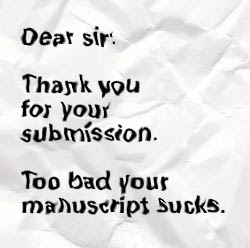On this blog every Tuesday and Friday I write about story techniques, structure, and/or publishing. Comments and questions are welcome. I also have a personal blog, Amy Deardon, on which I write about a variety of topics purely as they catch my fancy.
I've written one novel, A Lever Long Enough, that I'm honored to say has won two awards. In my life BC (before children) I was a scientist who did bench research.
My book, The Story Template: Conquer Writer's Block Using the Universal Structure of Story, is now available in both hard-copy and e-book formats. I also coach would-be novelists and screenwriters to develop their story. YOU CAN CONTACT ME at amydeardon at yahoo dot com.
I've written one novel, A Lever Long Enough, that I'm honored to say has won two awards. In my life BC (before children) I was a scientist who did bench research.
My book, The Story Template: Conquer Writer's Block Using the Universal Structure of Story, is now available in both hard-copy and e-book formats. I also coach would-be novelists and screenwriters to develop their story. YOU CAN CONTACT ME at amydeardon at yahoo dot com.
Friday, January 13, 2012
Getting Your Material Ready for Submission, Part 2: Preliminary Preparation of the Submission Package
I like to think of the submission process as a two-pronged approach: you need to figure out WHAT you are going to prepare, and WHO you are going to give it to. Today, let's start with the what.
Writers often spend months or even years writing a novel, and next to no time preparing materials to find a home for it. This is a big mistake -- a poorly compiled presentation will doom your manuscript to failure, even if you've written the next Gone with the Wind. Take some time to craft an exceptional submission package.
Before you start preparing your submission package, you need to sit back, take a deep breath, and figure out what you already have. I am going to assume for this blog entry that you've whupped your manuscript into the best shape it can be. This means that you didn't just type *The End* last week -- you've taken some time to edit, cut, reshape, and clarify your prose. This step is critical!!!
Now, for preparing to send it out. First question: what genre is your manuscript? Some genres are romance, adventure, mystery, suspense, and so forth. Some more questions: what are similar works to what you've done? What are some unusual characteristics of your story?
How long is your manuscript? Is this length appropriate for your genre? Many publishers, especially of romances, give strict word limits, and all genres have *typical* word ranges. For example, YA and romance novels might be about 50,000 words, other genres might be 60 or 80,000 words. A manuscript over 100,000 words will be a serious strike against you no matter what the genre; try to pare it down to about 80,000 - 90,000 words if you can.
Next, if you haven't already come up with these, you need to write a 15-25 word logline and a back-cover description of your book. I cover developing these in step-by-step detail in my book The Story Template: Conquer Writer's Block Using the Universal Structure of Story. A few examples of loglines include:
The Wizard of Oz: A farm girl is transported to a magical land and must find her way home.
The Fellowship of the Ring: A hobbit must destroy a magical ring of power before it destroys his world.
Romeo and Juliet: Two teenagers from warring families fall in love and must overcome family obstacles of hate to stay together.
The Count of Monte Cristo: A wrongfully imprisoned young man gains freedom and a fortune that he uses to wreak an elaborate revenge.
From my own book, A Lever Long Enough:
Logline: A small military team travels back in time to film the theft of Jesus' body from the tomb.
Shorthand tagline that I can use to quickly convey the sense of my book to an editor or agent: The Case for Christ meets The DaVinci Code.
Back Cover Copy:
The Israeli team, led by Benjamin Feinan, has exactly sevent-two hours to collect the video evidence. Failure threatens the existence of Israel and may cause the world to slip into all-out war. Drawn into a web of first-century deception and death, the only way to escape is for Benjamin to change the past. In the present, a traitor attempts to sabotage the mission and seize control of the military complex. Only Benjamin can reveal him, but he is trapped two thousand years away. Even with a time machine, time is running out.
Subscribe to:
Post Comments (Atom)

No comments:
Post a Comment